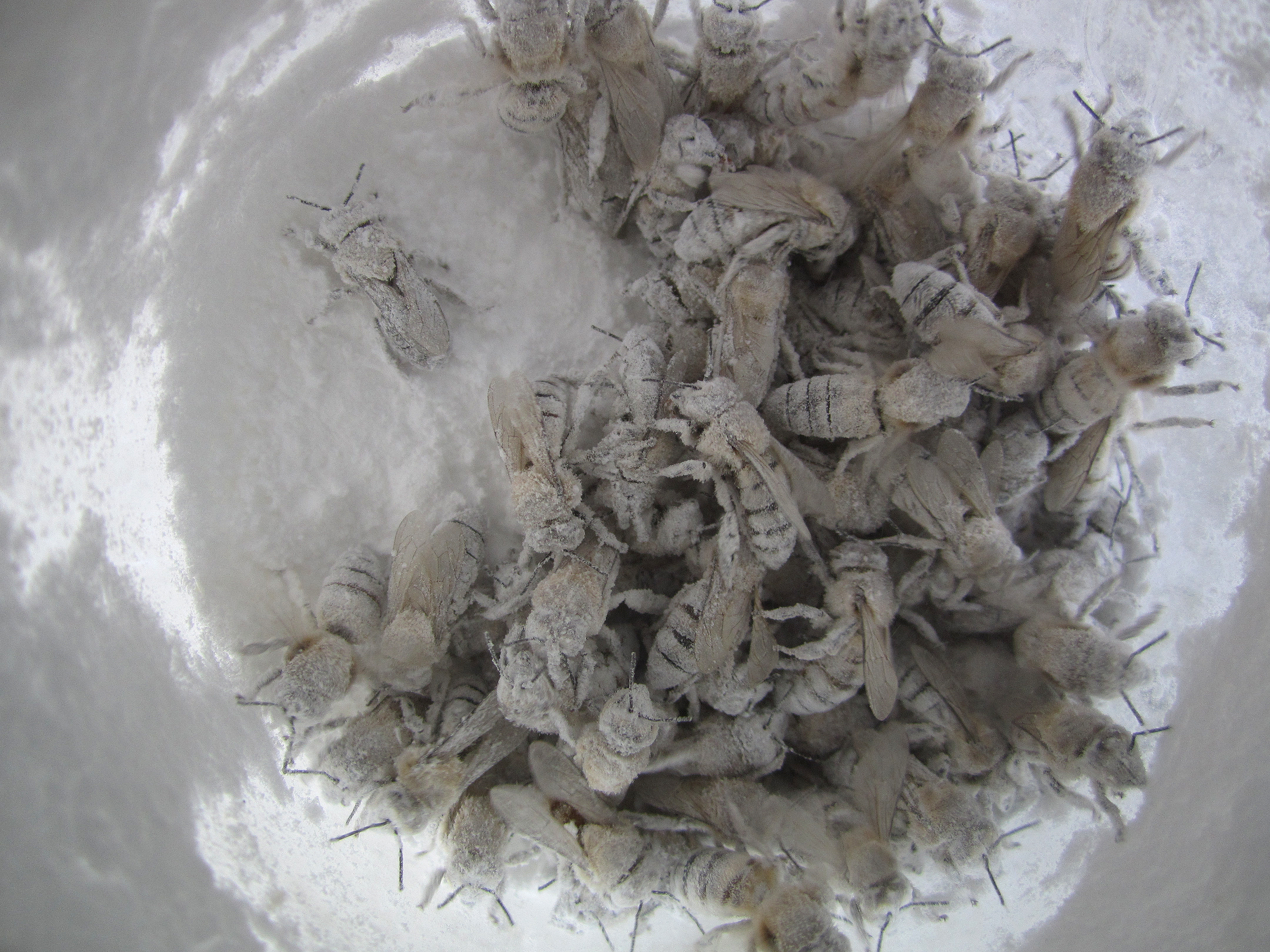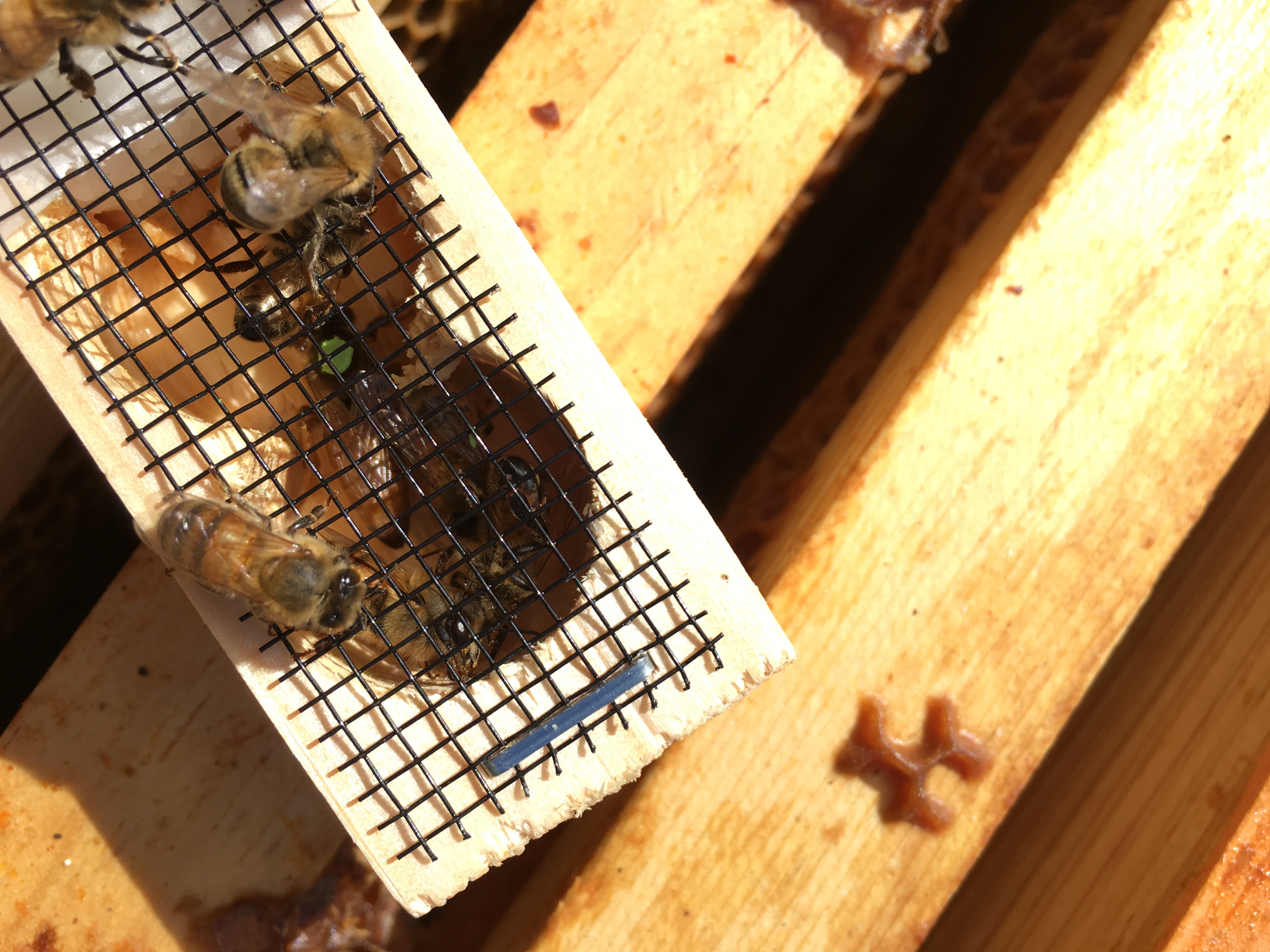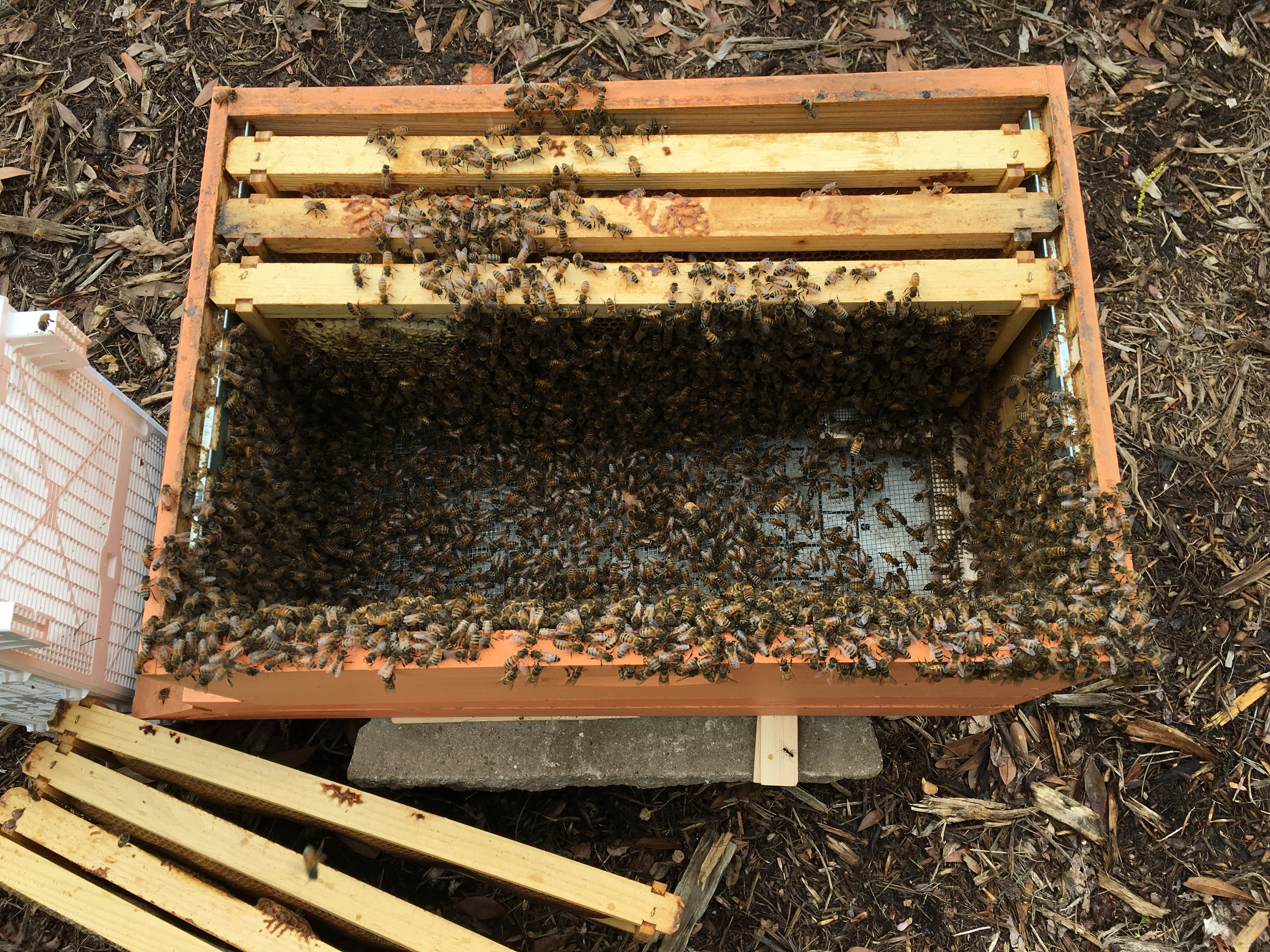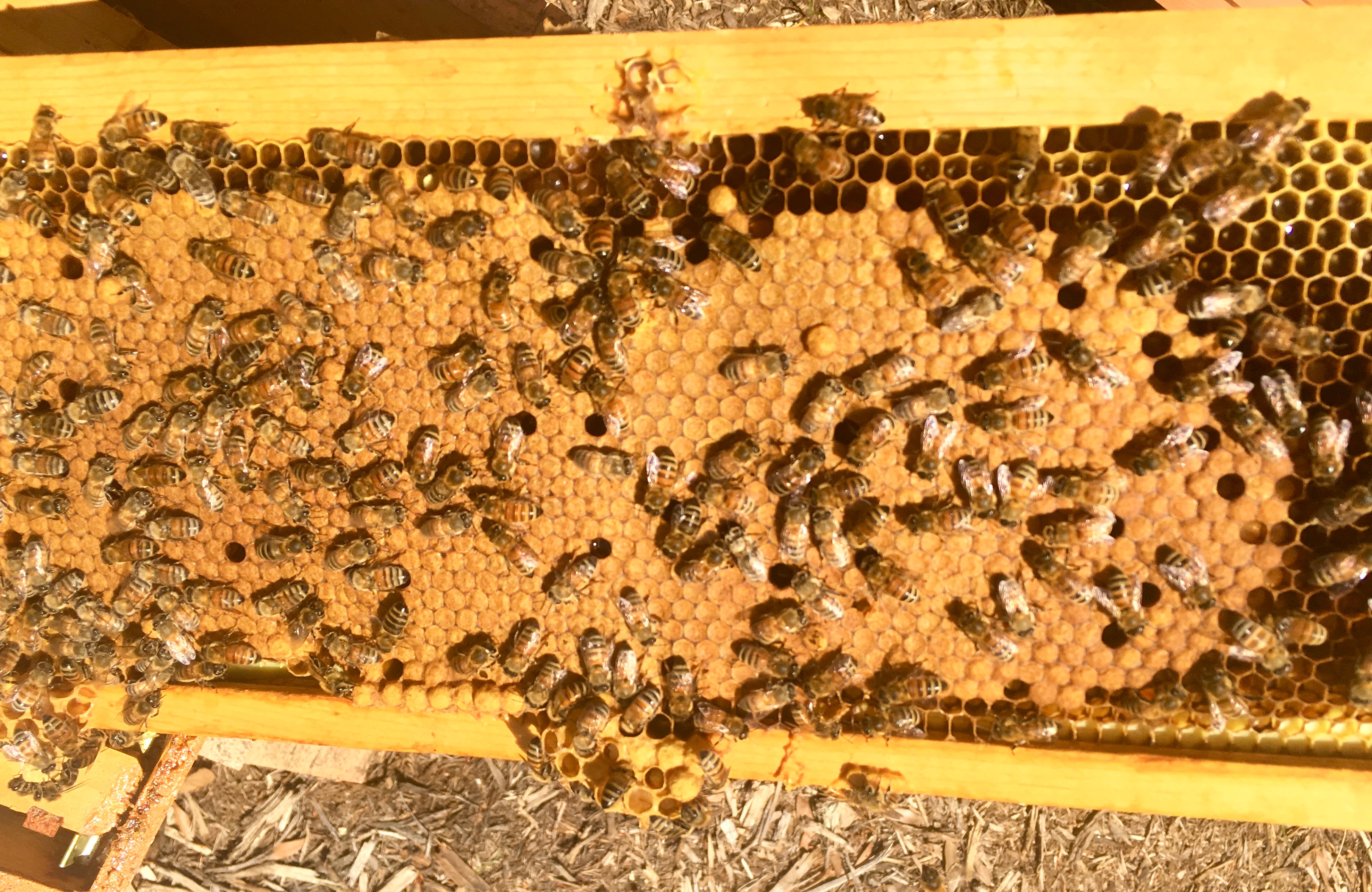





Poke Tacos Monkeypod

Tomato Tart - Jose Andres

LuLu Dog treats

Soup Alexis Alvarez Armas

Cafe Cubano

Riva @ Gritti Palace













The Greensboro Science Center has new bees! I have been holding off telling the story about how the hives were invaded by the nasty varroa mite and met their demise, until now. I made the discovery in February and it was one sad day for me and still disturbs me. On a happier note – I recently installed new bees.
Upon the realization that my bees were gone or deceased, I called in the bee expert for my area of N.C., Mr. Don Hopkins and asked him to come and confirm why I’d lost all my bees. It didn’t take him long to access the situation, as he told me he’s been seeing this often. He tried to make me feel better by informing me that I was about the 100th person who he’d already seen with this problem this year.

I want to share this story with you as varroa mite is one of the reasons why our world is experiencing “Colony Collapse Disorder”. I did a sugar shake test and didn’t see the mite so I didn’t treat for it. I’ve been keeping bees for over 6 years and have never been met with this pest. Going forward you can bet I will do diligence to prevent a disaster such as this from happening again!

This year I will check my new colonies by investigating the brood for mites where they are easier to see. I’ll keep you up to date on how all of that plays out but now let me introduce you to the new bees at the GSO! The link below will take you to a video of the girls in their bee bus. The bee bus is how they are transported from bee breeder to beekeepers. You will see they are very active and ready to move into their new digs where they will have plenty of room to settle down.
The queen arrives in a queen cage and is attended by a few bees inside with her. There is a plug of candy on one end that the bees eat through to release the queen. This year bees have lime green crowns to denote the year they were born. You will see one of the new queens in her cage in the photo below prior to being inserted into the hive.

After getting the queen situated at the bottom of the hive body the colony is dumped into their new home. There are always a few stragglers who eventually find their way inside. After the majority of bees have ventured into the hive I close off the top and wait a few days until opening the hive again. Look closely in the top right corner of the box floor and you can see the queen cage – already surrounded by the bees. Do you know how the girls know to go inside this hive?

Did you guess? They are attune to the pheromones of this particular queen and follow their intuition, going into the hive. It’s truly amazing to watch an entire colony of bees walk or fly right into the hive where their queen resides!
I installed the bees on April 6 and when I went back a few days later to be certain the queen was out of her cage and all was well I panicked because I didn’t see a queen in either hive. There was no sign of brood but the bees that were in residence seemed happy and busy. I noticed plenty of pollen and honey already in the hives. Holy smoke – when I say panic I mean I freaked! Once again I made a phone call. This time to the supply company where I’d acquired these bees. The gentleman on the phone said the same thing had happened to him. WHAT? I kept thinking about how Mr. F always told me “bee keeping ain’t nothin’ but problem solvin'”. Amen to that!
After a bit of discussion he told me that he is suspicious that we had received unfertilized queens. We weren’t supposed to receive unfertilized queens but it seemed we probably had. So that meant that there was a very good chance that the queens had flown out of the hive – made their way to the mating grounds – and would return in a couple of days. Time to pull the patience card and wait another few days.

When I went back one week later this is what I found! Here is a frame full of the sweet new bees and if you look closely in the cells you will see eggs. Hint – they look like tiny grains of rice! So…if there are eggs there must be a queen! Voila – I was greeted by both queens on this day and even watched as one queen went about her business of laying eggs as if I wasn’t even there. Below is the link to this phenomenal act – one she does around 1200 times a day. Exhausting to think about – right?
You will see the queen checking out the cells to be sure they are empty and ready for an egg before she backs into one and does her stuff. You will also notice the attendant bees form a circle around her and groom and love on her the entire time. This my friends is nature right before your very eyes. It’s not often that I see events as remarkable as this – and my day was made! I think it unlikely that you have seen a queen bee lay an egg before so I am happy to share this with you!
I was elated and closed up the hives happy that on this day I wouldn’t be solving any problems. I believe my queens were unfertilized and sure was glad they were back from their virgin mating flights! On my subsequent visits I continue to see my queens and happy bees. There is plenty of brood, pollen and honey in both hives. Crossing my fingers that we are successful with these new bees. I will be checking for mites in the next week or so. I’ll also check to see if pulling honey this year is a good idea or possibly leaving it for my girls to have this winter. The tan covering in the photo below is where the brood grows to maturity. After the eggs have been fed and the larvae reach a certain size the bees cover the babies with this capping and when mature the new bees eat away the cover and climb out to join their sisters.

This is only the beginning of another new bee adventure. Here is a link to the Varroa Mite if you’re interested in learning more about this destructor. Remember – do your part! Plant bee friendly flowers and stay away from pesticides in the gardens! Here is why – every third bite of food we eat is pollinated by a bee!


?
The photos are amazing. That is the closest I could ever get to that many bees though, pretty scary. 🙂
Hahaha….I’m not scared but I understand your feelings. That is why I like to share what you may otherwise not see!
This is so interesting! I’ve never heard of the mites and their part on colony collapse. Who knew that bugs get bugs that can kill them? Fascinating, thanks for sharing 🙂
Pretty much everything concerning bees is interesting – you know that though! And right – bugs killing bugs – sometimes that might be good but not in this instance!